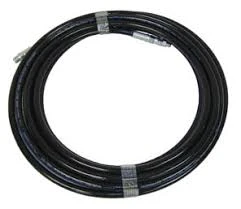pipe couplings and clamps
An Overview of Pipe Couplings and Clamps
Pipe couplings and clamps are essential components in various industries, tasked with the critical role of joining pipes and securing them in place. Whether in plumbing, construction, or industrial applications, the proper selection and application of these fittings can significantly impact the integrity and longevity of piping systems. This article will explore the types, functions, and importance of pipe couplings and clamps in modern infrastructure.
Understanding Pipe Couplings
Pipe couplings are devices used to connect two sections of pipe. They can come in various designs, allowing for different types of connections depending on factors such as pipe material, size, and applications. The most common types of pipe couplings include
1. Mechanical Couplings These couplings allow for the easy and quick assembly of pipes without extensive tools or welding. Typically made of stainless steel or aluminum, they are often used in applications that require frequent disassembly. 2. Welded Couplings Used primarily in gas and liquid transport, welded couplings ensure a permanent and leak-proof seal. The process of welding forms a strong joint, making it ideal for high-pressure systems but requiring skilled labor to install.
3. Flanged Couplings Featuring a projecting lip or flange, these couplings allow for easy alignment and bolting of pipes together. Flanged connections are often used in larger diameter pipes, where a secure joint is necessary for heavy-duty applications.
4. Compression Couplings These couplings utilize a compression fitting to create a secure seal around the pipe. They are often employed in plumbing applications, providing the flexibility to connect different materials seamlessly.
The Role of Pipe Clamps
Pipe clamps, on the other hand, are devices used to secure pipes to a surface or to each other. They serve multiple purposes, including
- Support They hold pipes in place, preventing sagging or misalignment, which is particularly important in vertical piping systems. - Vibration Dampening Pipe clamps can absorb vibrations caused by fluid flow or external factors, decreasing wear and tear on the piping system.
- Thermal Expansion Accommodation As temperatures fluctuate, pipes expand and contract. Properly installed clamps allow for this movement without damaging the pipes or joints.
Types of Pipe Clamps
pipe couplings and clamps

1. Single Bolt Clamps These are the simplest and most common type of clamps, suitable for securing smaller diameters of pipe. They are easy to install and adjust. 2. Double Bolt Clamps Designed for larger pipes, double bolt clamps provide increased stability and support by distributing pressure evenly around the pipe.
4. Adjustable Clamps These clamps can be modified to accommodate various pipe sizes, making them versatile for different projects.
Importance in Industry
The significance of pipe couplings and clamps cannot be overstated. Proper use of these components contributes to
- System Integrity Properly installed couplings and clamps prevent leaks and failures in piping systems, which can lead to costly repairs and downtime.
- Safety In industries like oil and gas, water treatment, and chemical processing, ensuring that pipes are joined securely is paramount for protecting workers and the environment.
- Efficiency Well-designed and installed piping systems enhance flow rates and reduce energy consumption, contributing to overall operational efficiency.
- Longevity Quality materials and effective installation of couplings and clamps enhance the lifespan of piping systems, providing long-term savings.
Conclusion
In conclusion, pipe couplings and clamps are integral components of any piping system. Their design, selection, and installation can greatly influence the performance and reliability of these systems. Whether in residential plumbing or large-scale industrial applications, understanding the characteristics and functions of couplings and clamps ensures that a project not only meets current requirements but is also prepared for future demands. As industries continue to evolve and innovate, the development and application of these hardware components will remain crucial for sustained progress and reliability.
-
Ultimate Spiral Protection for Hoses & CablesNewsJun.26,2025
-
The Ultimate Quick-Connect Solutions for Every NeedNewsJun.26,2025
-
SAE J1401 Brake Hose: Reliable Choice for Safe BrakingNewsJun.26,2025
-
Reliable J2064 A/C Hoses for Real-World Cooling NeedsNewsJun.26,2025
-
Heavy-Duty Sewer Jetting Hoses Built to LastNewsJun.26,2025
-
Fix Power Steering Tube Leaks Fast – Durable & Affordable SolutionNewsJun.26,2025

